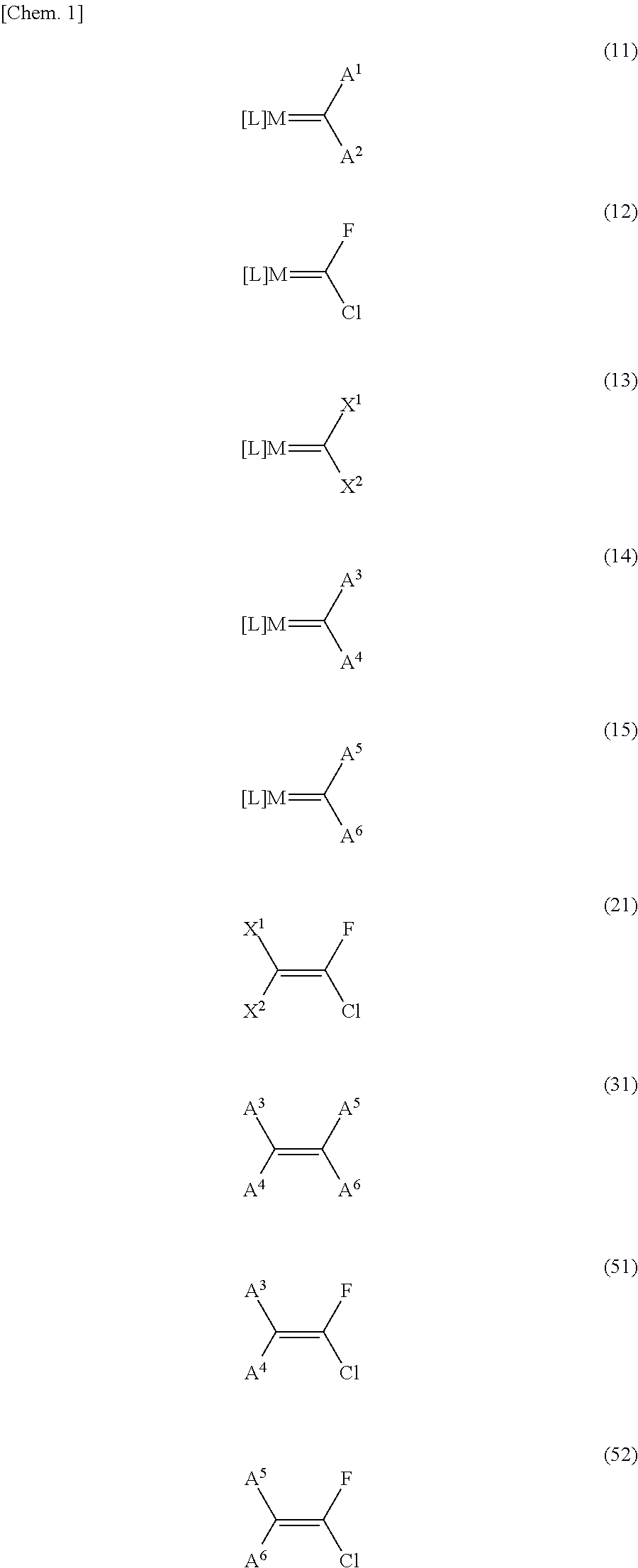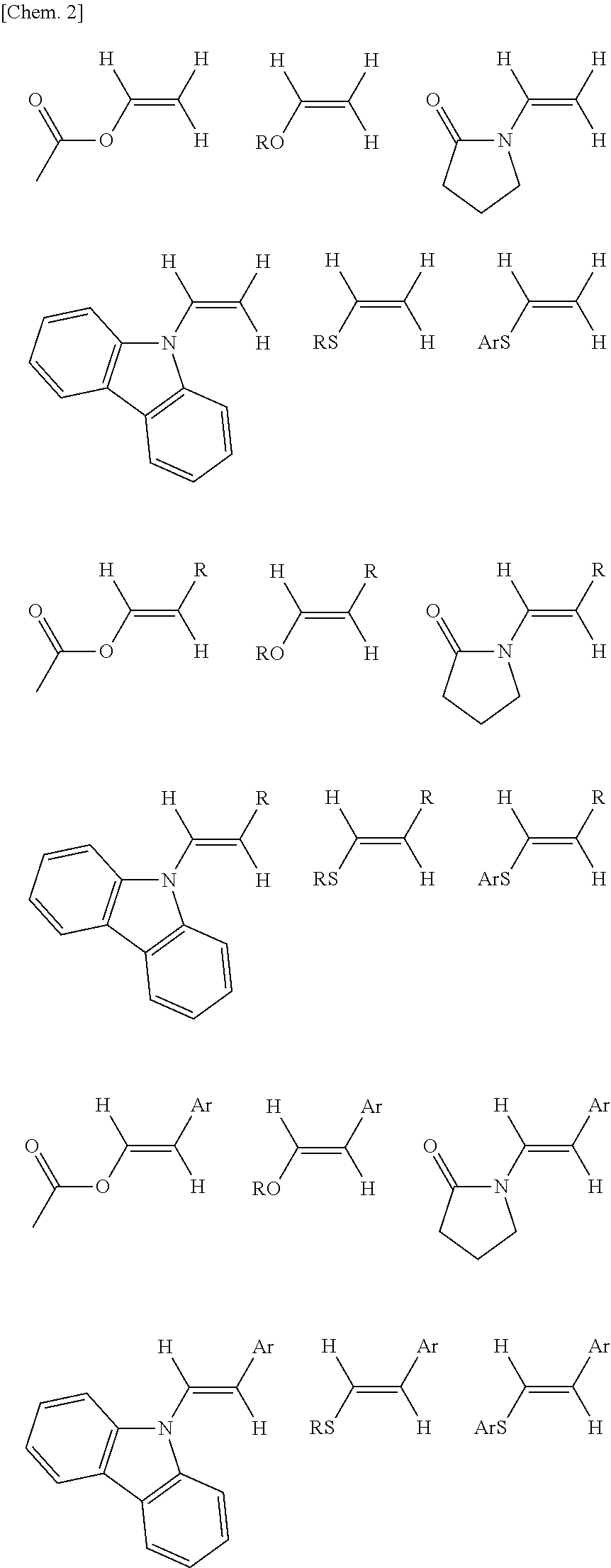Method for producing olefin containing chlorine and fluorine
a technology of olefin and chlorine, which is applied in the field of producing an olefin containing chlorine and fluorine, can solve the problems of not only difficult to handle, extremely electron-deficient olefins, and inability to use halogen atom-containing olefins in olefin metathesis, etc., and achieves the effect of simple and efficient production
- Summary
- Abstract
- Description
- Claims
- Application Information
AI Technical Summary
Benefits of technology
Problems solved by technology
Method used
Image
Examples
reference example 1
Metathesis of Dodecyl Vinyl Ether and 1,2-dichloro-1,2-difluoroethylene (R-1112) with Commercial Molybdenum Catalyst B
[0188]In a nitrogen atmosphere, a commercial molybdenum catalyst B (2 mol %; 0.0012 mmol), dodecyl vinyl ether (0.06 mmol), 1,2-dichloro-1,2-difluoroethylene (R-1112) (0.12 mmol), and benzene-d6 (0.6 mL) containing p-bis(trifluoromethyl)benzene (internal standard; 0.01 mmol) dissolved therein were weighed and put into a pressure-proof NMR tube.
[0189]The NMR tube was heated at 60° C. and held at that temperature for 1 hour. After the 1-hour holding, the starting materials only were recovered and the desired product was not obtained.
[0190]
reference example 2
Metathesis of Dodecyl Vinyl Ether and 1,2-dichloro-1,2-difluoroethylene (R-1112) with Commercial Molybdenum Catalyst C
[0191]In a nitrogen atmosphere, a commercial molybdenum catalyst C (2 mol %; 0.0012 mmol), dodecyl vinyl ether (0.06 mmol), 1,2-dichloro-1,2-difluoroethylene (R-1112) (0.12 mmol), and benzene-d6 (0.6 mL) containing p-bis(trifluoromethyl)benzene (internal standard; 0.01 mmol) dissolved therein were weighed and put into a pressure-proof NMR tube.
[0192]The NMR tube was heated at 60° C. and held at that temperature for 1 hour. After the 1-hour holding, the starting materials only were recovered and the desired product was not obtained.
[0193]
example 2
Metathesis of Butyl Vinyl Ether and 1,2-dichloro-1,2-difluoroethylene (R-1112) with Commercial Molybdenum Catalyst D
[0194]In a nitrogen atmosphere, a commercial molybdenum catalyst D (2 mol %; 0.0012 mmol), butyl vinyl ether (0.06 mmol; previously degassed by freeze-pump-thaw cycles and dried over potassium hydroxide), 1,2-dichloro-1,2-difluoroethylene (R-1112) (0.12 mmol), and benzene-d6 (0.6 mL) containing p-bis(trifluoromethyl)benzene (internal standard; 0.02 mmol) dissolved therein are weighed and put into a pressure-proof NMR tube.
[0195]The NMR tube is heated at 60° C. and the reaction is conducted at that temperature for 1 hour. After completion of the reaction, NMR and GC-MS of the liquid content are measured to confirm the formation of butyl (2-chloro-2-fluorovinyl) ether.
[0196]
PUM
| Property | Measurement | Unit |
|---|---|---|
| temperature | aaaaa | aaaaa |
| temperature | aaaaa | aaaaa |
| carbon number | aaaaa | aaaaa |
Abstract
Description
Claims
Application Information
 Login to View More
Login to View More - R&D
- Intellectual Property
- Life Sciences
- Materials
- Tech Scout
- Unparalleled Data Quality
- Higher Quality Content
- 60% Fewer Hallucinations
Browse by: Latest US Patents, China's latest patents, Technical Efficacy Thesaurus, Application Domain, Technology Topic, Popular Technical Reports.
© 2025 PatSnap. All rights reserved.Legal|Privacy policy|Modern Slavery Act Transparency Statement|Sitemap|About US| Contact US: help@patsnap.com



